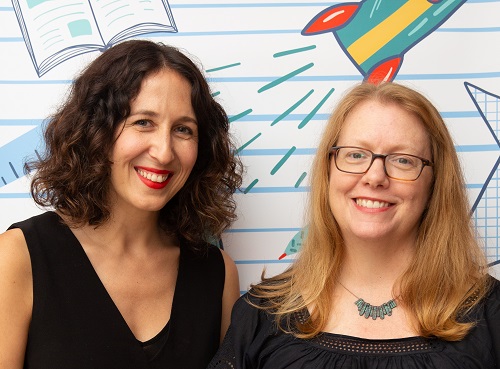Ensure Family Census Participation During the Pandemic | First Steps
Mentioning the census in storytimes, including virtual storytimes, is a simple way to reach families about this vital issue.
Census pop quiz: Do newborn babies count in the 2020 United States census? Yes! What about babies still in the hospital? Yes! What is the most undercounted age group in the census? Young children, birth to five!
An estimated five percent of children weren’t counted in the 2010 census—that’s one million people. Census data helps determine billions in local funding for programs like SNAP, school lunch initiatives, and the Children’s Health Insurance Program. When children are undercounted, these programs lose funding, which is based on the number of children counted. The data is used for 10 years, compounding the impact.
Research on the 2010 census showed that variation in household structure is a key reason for undercounting. Some young children live in large, complex households, in homes that are rented, not owned. Many live with single parents or young parents between the ages of 18 and 29, and some live with grandparents, aunts, and uncles. Language barriers, parents or children with disabilities, and immigration status increase the challenges in counting children. And, it is even more important to support efforts as activities have slowed due to social distancing. Mentioning the census in storytimes is a simple way to reach these families, whether the programs are in-person or virtual. “Share that the census is happening now, and that it’s important and safe to take part,” says Amy Mikel, civic engagement manager at Brooklyn Public Library (BPL). “Use counting books and songs to support your message.” The library’s Spring Ready Set Kindergarten program, which has gone virtual, will devote a full session to the census, sharing “census tips” alongside early literacy suggestions, reading counting books such as The Doorbell Rang by Pat Hutchins, and engaging in activities that develop math skills like one-to-one correspondence and sorting.
Libraries across the country plan on using the book We Count!: A 2020 Census Counting Book for Young Children and the Grownups Who Love Them , which tackles counting and diverse household structures. Lisa Bernstein, executive director and publisher of Simply Put Media, created the book when a coalition from Passaic, NJ, realized the impact of the undercount. “There was a lot of talk about the need to count young children, but this community couldn’t find any tools or resources that showed them how to do it,” she says. An ebook in multiple languages and an online read-aloud are also available.
Now that library services are predominantly virtual, it is even more important to use social media, remote programming, and online resources to support the census. Create a Census-themed ebook list about the importance of community, counting, and civic engagement. Invite local elected officials and local celebrities to be guest readers at your virtual storytimes, and encourage them to discuss why the census is so important. At BPL, New York City council members, state senators, and assembly members are guest readers at our virtual Facebook Live Storytimes. We have paired them with children’s librarians from their districts and discussed the importance of counting everyone, babies to grandparents, in your household, while singing counting songs and reading favorite books.
Make sure you are getting the word out about the importance of the census in multiple languages, as immigrant families may need extra reassurance that the U.S. Census Bureau is bound by law to protect answers and keep them confidential. If you are offering virtual or in-person bilingual storytimes, make sure program leaders are mentioning the census. At BPL, we have offered Virtual Census Storytimes in Spanish, Cantonese, Kreyol, Mandarin, Urdu, and Yiddish. If you don’t have staff who speak the languages your communities, partner with immigrant social groups, schools, child care providers, and other community agencies with bilingual staff. Invite them to be guest readers at your virtual and in-person programs to spread the word to families.
Census efforts were originally supposed to wrap in July, but due to COVID-19, they have been expanded until October 2020. As libraries begin to reopen, Bernstein and Mikel recommend contacting key community partners to reach families. “Leverage your relationships with day care centers, schools, service agencies, and local businesses to promote library resources for completing the census, like language access tools, computers, and Wi-Fi,” says Mikel. It may take a village to raise a child, but it takes a village to count kids, too.

RELATED
The job outlook in 2030: Librarians will be in demand
The job outlook in 2030: Librarians will be in demand
ALREADY A SUBSCRIBER? LOG IN
We are currently offering this content for free. Sign up now to activate your personal profile, where you can save articles for future viewing






Add Comment :-
Be the first reader to comment.
Comment Policy:
Comment should not be empty !!!